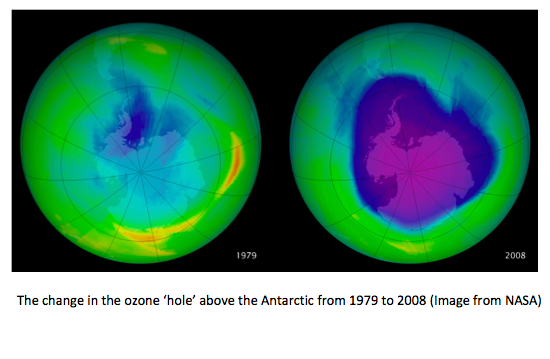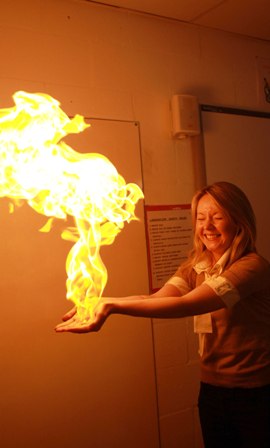5.3 Bond enthalpies
Written specifically for students to provide help and support for the IB Diploma chemistry programme this page provides full coverage of the syllabus content of Topic 5.3 Bond enthalpies. It encourages you to think critically and provides many questions with full worked answers so that you can monitor and improve your knowledge and understanding.


 Learning outcomes
Learning outcomes
After studying this topic you should be able to:
 Understand:
Understand:
- Bond-breaking requires energy whereas bond formation releases energy.
- The average bond enthalpy is the average energy required to break one mole of the bond in similar compounds all in the gaseous state.
Apply your knowledge to:
- Calculate enthalpy changes from known bond enthalpy values and compare these to experimentally measured values.
- Sketch and evaluate potential energy profiles to determine whether the reactants or the products are more stable and deduce whether the reaction is exothermic or endothermic.
- Discuss the oxygen to oxygen bond strength in ozone relative to oxygen gas and its importance to the atmosphere.
Relationships & vocabulary
Nature of science
Measured energy changes can be explained using the model of breaking and forming bonds.
Agreement with empirical data depends on the sophistication of the model.
Data obtained based on the model can be used to modify theories where appropriate.
International-mindedness
The pollution that causes stratospheric ozone depletion ('holes' in the ozone layer) particularly in the polar regions comes from a variety of countries and sources. International action and cooperation (e.g. The Montreal Protocol) have helped to lessen the problem of ozone depletion.
For more examples and links to International mindedness, Theory of knowledge, utilization etc. see separate page which covers all of Topics 5 & 15: Energetics/thermochemistry.
Vocabulary
| average bond enthalpy | enthalpy of atomisation | ozone depletion |
Learning slides
You can use this slide gallery for learning or for reviewing concepts and information. It covers all the key points in the syllabus for this sub-topic.
Something to think about
 Be careful when you answer questions using average bond enthalpies to arrive at enthalpy changes for a reaction. Usually it will give results that are quite close to the literature values - but not always. Consider the case of using average bond enthalpies for determining the enthalpy of combustion of methane.
Be careful when you answer questions using average bond enthalpies to arrive at enthalpy changes for a reaction. Usually it will give results that are quite close to the literature values - but not always. Consider the case of using average bond enthalpies for determining the enthalpy of combustion of methane.
CH4(g) + 2O2(g) → CO2(g) + 2H2O(l)
Using the values from Section 11 of the IB data booklet the energy that has to be put in to break the bonds is 2652 kJ mol-1 (made up of 4 x C-H + 2 x O=O, i.e. (4 x 414) + (2 x 498) = 2652 kJ mol-1). The energy given out when the new bonds are formed is 3468 kJ mol-1 (made up of 2 x C=O + 4 x O-H, i.e. (2 x 804) + (4 x 463) = 3460 kJ mol-1). This means that overall the reaction is exothermic and the energy released is 808 kJ mol-1 or put another way ∆Hc(CH4) = – 808 kJ mol-1 .
The problem is that this does not agree with the value for the enthalpy change of combustion of methane which is given in Section 13 as – 891 kJ mol-1.
An astute student will pick up on one wrong assumption straightaway. Average bond enthalpies refer to the gaseous state. From the definition of enthalpy of combustion the water is in the liquid state. To correct for this we need to add the energy evolved when two moles of gaseous water condense to form two moles of liquid water. The enthalpy of vaporization of water is 44 kJ mol-1 so this brings our revised enthalpy of combustion value to – 896 kJ mol-1. This is still 5 kJ mol-1 different to the literature value so what other assumption is wrong?
The obvious answer is that average bond enthalpies have been used and these will vary slightly from compound to compound and probably account for the relatively small difference of 5 kJ . It is also worth looking at the average bond enthalpy value used for the C=O bond. Because carbon dioxide contains two C=O bonds originating from the single carbon atom the average bond enthalpy is not the same as for compounds that only contain one C=O bond. The current data booklet (for first exams in 2016) has the value of 804 kJ which is more or less correct for carbon dioxide whereas the old IB data booklet (for first exams in 2009) had the value of 746 kJ mol-1 which is of course very different and is the value when only one C=O bond is being referred to as in aldehydes and ketones.
Test your understanding of this topic
(Note that your teacher may have restricted your access to some or all of these questions and worked answers if they are going to use them as a class test or set them as an assignment.)
For ten 'quiz' multiple choice questions with the answers explained see MC test: Bond enthalpies.
For short-answer questions see Bond enthalpy questions.
More resources
1. This is an interesting video produced by Ohio State University. Superficially it looks to be a straightforward tutorial on how to use average bond enthalpies to determine the enthalpy of combustion of propane. Look at it critically. You should notice that the result of -3361 kJ mol-1 obtained in the video by using average bond enthalpies is very different to the literature value of -2219 kJ mol-1 given in Section 13 of the IB data booklet. The tutorial ignores the definition of bond enthalpies and calculates the energy evolved when 5H2O(l) is formed by using just O-H bond enthalpies for the gaseous state i.e. it ignores the change of state from gaseous water to liquid water and the extra 4 x 44 kJ mol-1 of energy given out. Apart from the water problem the value for the C=O bond used is 1072 kJ mol-1. As we saw in ‘Pause for thought’ above, the IB data booklet value is 804 kJ mol-1 . By using 6 x 804 kJ mol-1 instead of 6 x 1072 kJ mol-1 for C=O and adding the factor of 4 x 44 kJ mol-1 for the change of state of the four moles of liquid water formed the answer comes out to -2229 kJ mol-1 which is close to the correct value of -2219 kJ mol-1. Looking critically at this video gives you a good insight into TOK – do not just trust the source of your knowledge even if it comes from a university! You should look at all sources of knowledge critically!
2. Defining average bond enthalpy the IB way from Richard Thornley, an IB Chemistry teacher at the International School of Genoa.
Defining average bond enthalpy ![]()

 IB Docs (2) Team
IB Docs (2) Team 


















